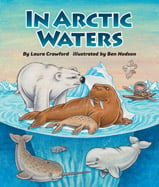Alignment to Standards for LA

| Grade | Number | Standard |
|---|---|---|
| 1 | LS-1.26 | Describe the differences between plants and animals |
| 1 | LS-1.31 | Describe how animals and their offspring are similar and how they are different |
| 1 | LS-1.32 | Describe features of some animals that benefit them in their environments |
| 2 | LS-2.33 | Compare the life cycles of selected organisms (e.g., mealworm, caterpillar, tadpole) |
| 2 | LS-2.34 | Describe inherited characteristics of living things |
| 2 | LS-2.35 | Identify the components of a variety of habitats and describe how organisms in those habitats depend on each other |
| 2 | SE-2.45 | Locate and identify plants and animals within an ecosystem |
| 2 | SE-2.51 | Describe and give examples of threatened or endangered species |
| 3 | ESS-3.47 | Describe the difference between weather and climate |
| 3 | LS-3.35 | Compare structures (parts of the body) in a variety of animals (e.g., fish, mammals, reptiles, amphibians, birds, insects) |
| 3 | LS-3.38 | Classify groups of organisms based on common characteristics |
| 3 | LS-3.39 | Compare organisms from different groups (e.g., birds with mammals, terrestrial plants with aquatic plants) |
| 3 | SE-3.57 | Describe the interrelationships of living (biotic) and nonliving (abiotic) components within various ecosystems (e.g., terrarium, swamp, backyard) |
| 4 | LS-4.41 | Describe how parts of animalsê bodies are related to their functions and survival (e.g., wings/flying, webbed feet/swimming) |
| 4 | LS-4.47 | Sequence stages in the life cycles of various organisms, including seed plants |
| 4 | LS-4.52 | Describe how some plants and animals have adapted to their habitats |
| 4 | LS-4.53 | Identify the habitat in which selected organisms would most likely live and explain how specific structures help organisms to survive |
| 5 | ESS-5.36. | Identify, describe, and compare climate zones (e.g., polar, temperate, tropical) |
| 5 | LS-5.23. | Construct food chains that could be found in ponds, marshes, oceans, forests, or meadows |
| 5 | LS-5.27. | Compare common traits of organisms within major ecosystems |
| 5 | LS-5.28. | Explain and give examples of predator/prey relationships |
| K | LS-K.28 | Observe life cycles and describe changes (e.g., humans, dogs, insects) |
| PK | LS-PK.20 | Give examples of different kinds of plants and different kinds of animals |
| PK | LS-PK.22. | Learn about animals and plants through nonfiction literature (For Creative Minds) |